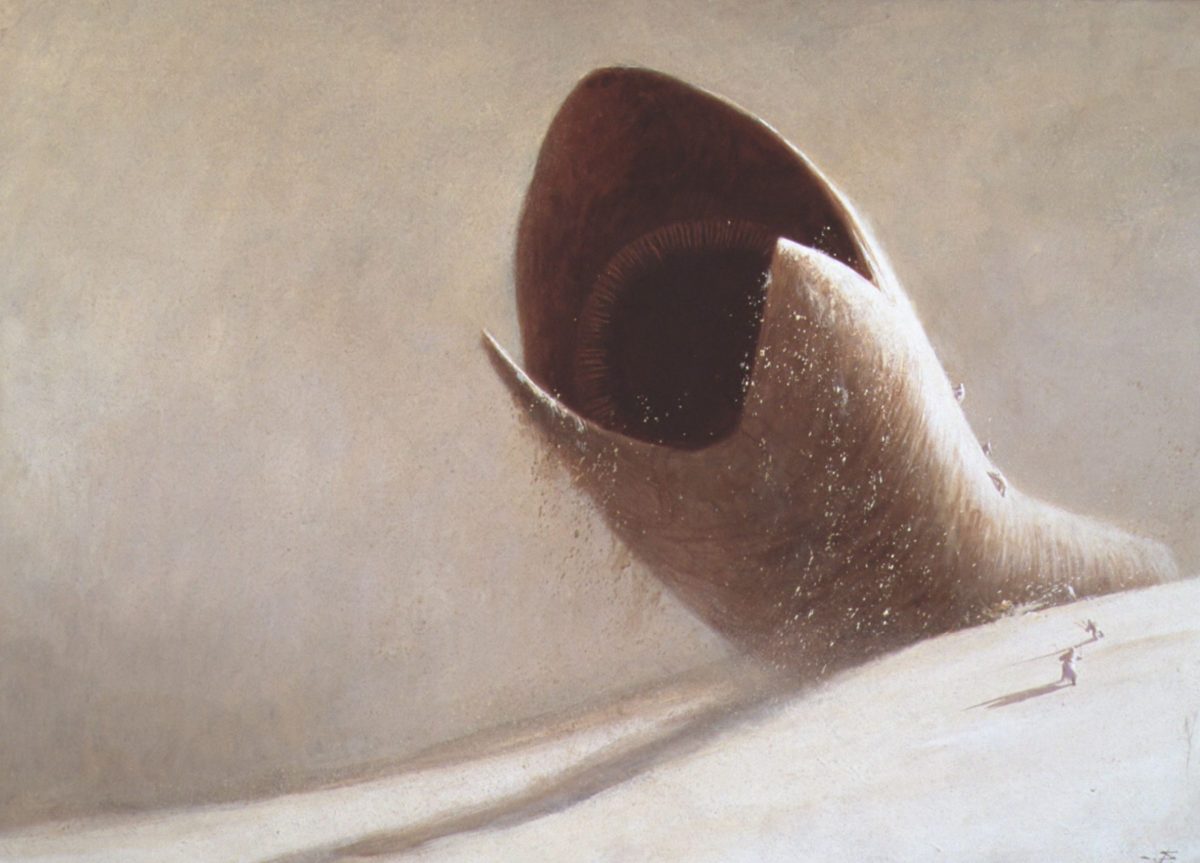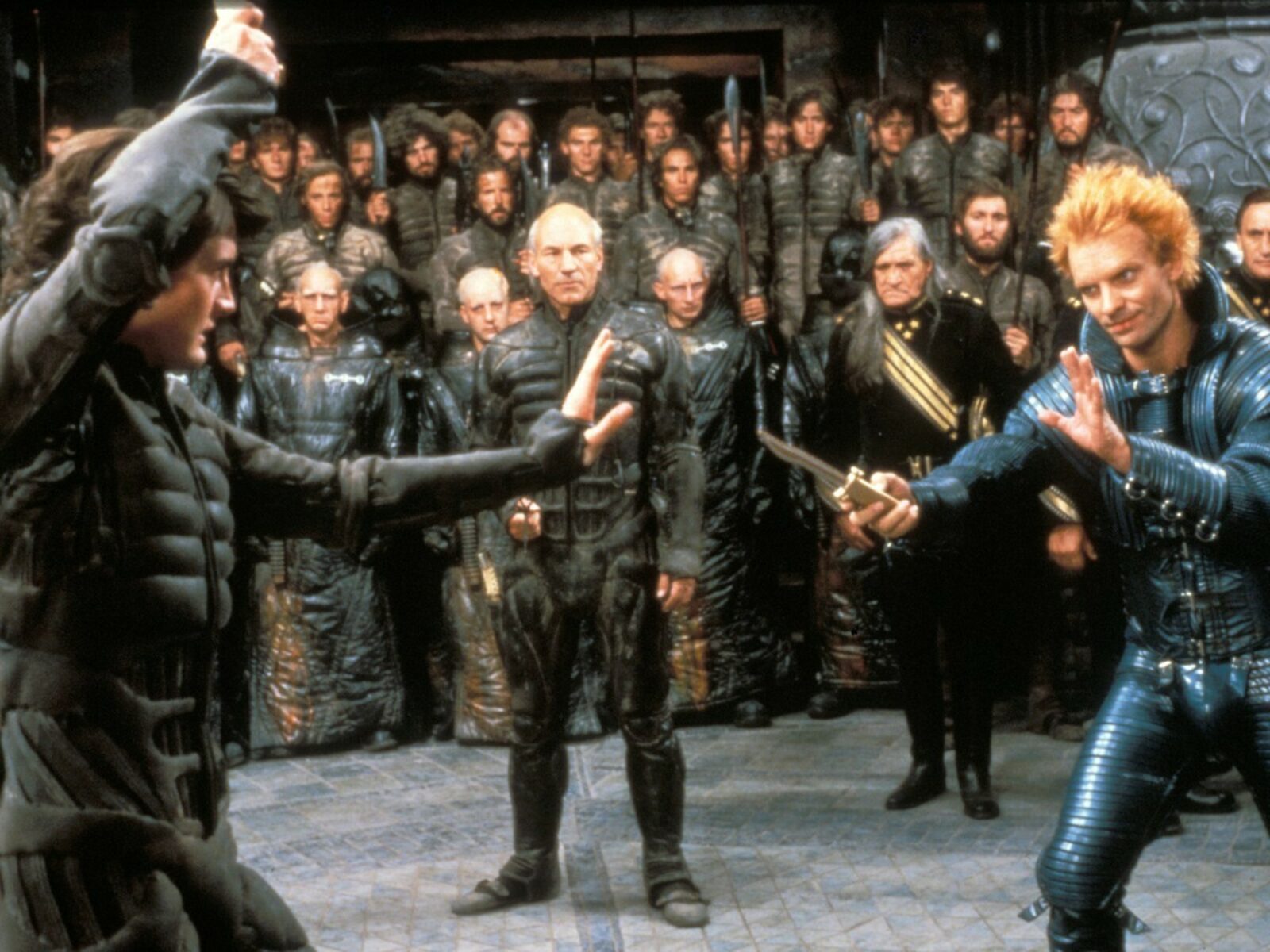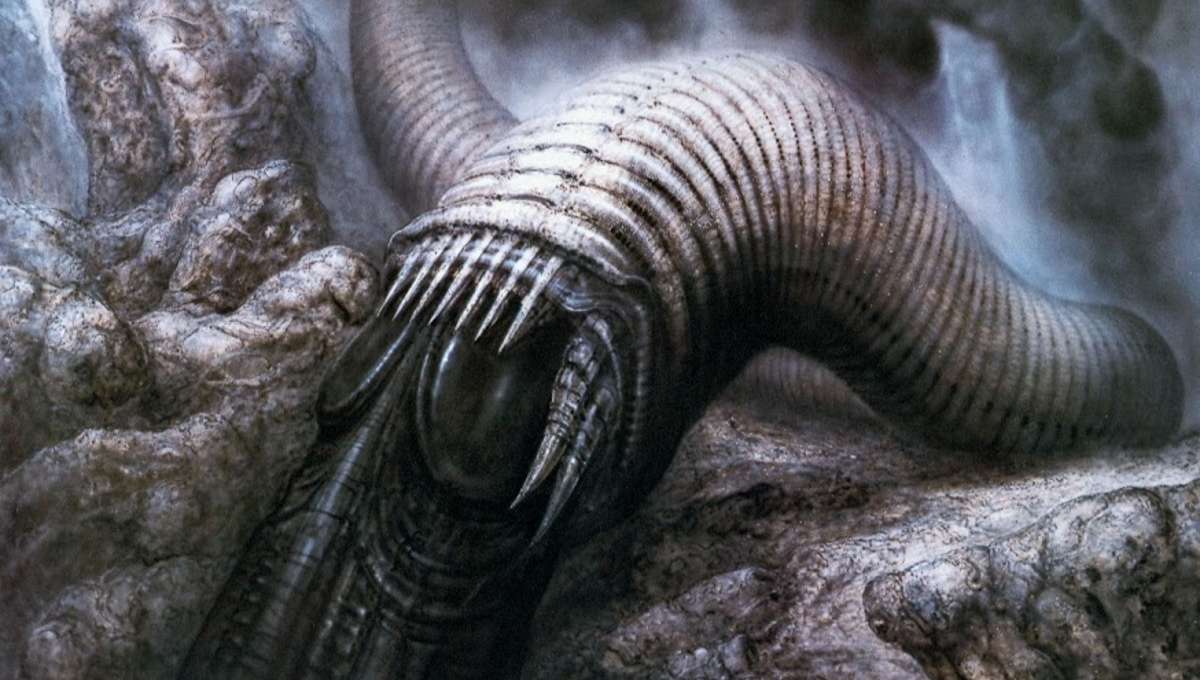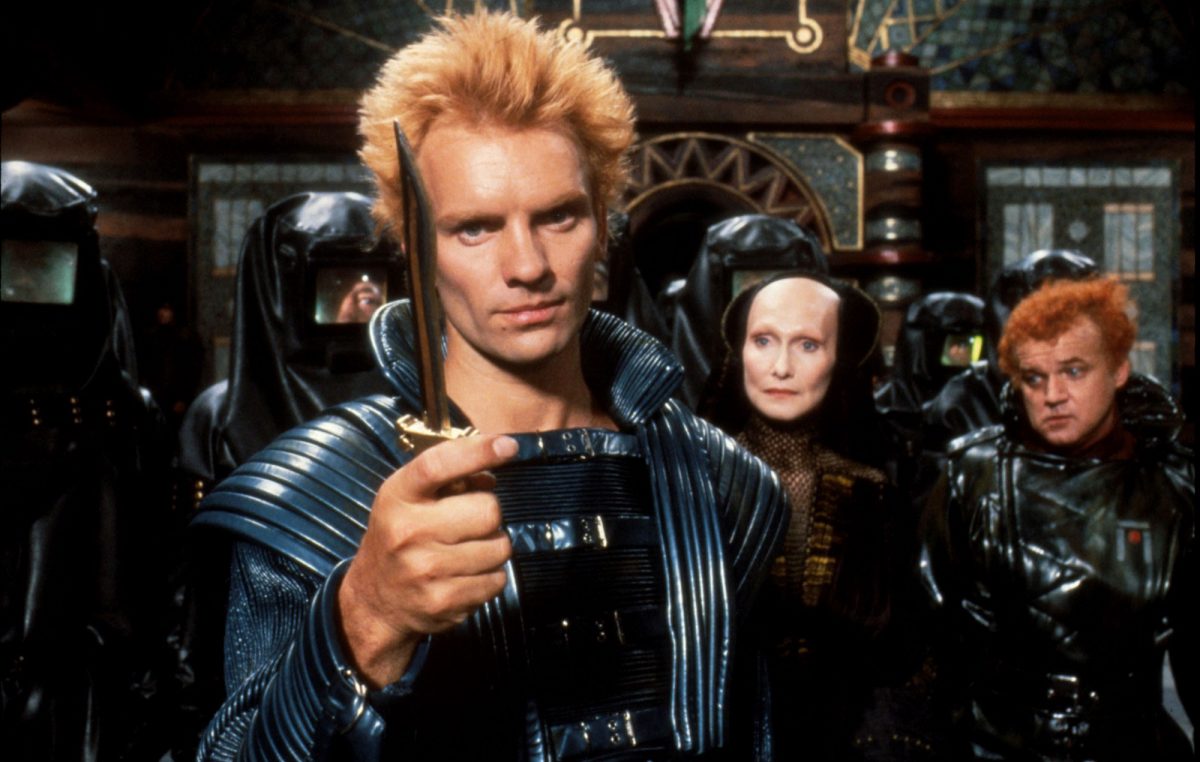His evocative magazine and book covers have set the tone for the entire Dune saga.
How many teeth has a sandworm? Where are the blueprints for constructing an ornithopter? What shape has a crawler?
Such issues confront any artist challenged to illustrate the world of Dune. But not any artist could rise to the occasion.
John Schoenherr could—and did. For more than ten years. Schoenherr came up with many of the best realizations of a science fiction world. His magazine, book and calendar illustrations of Dune remain the definitive representation of that world.
An illustrator of nearly 100 book covers. Schoenherr was already one of Analog’s principal artists when its editor. John Campbell, asked him to do illustrations to go with the Dune installments, which first appeared in the magazine in 1963.
Campbell set the number of illustrations he wanted per installment, but the artist was free to select the passages to be illustrated Schoenherr did six black-and-white drawings for each of the three parts the novel was segmented into.
Schoenherr’s artistic style suits Herbert s descriptive language and imagery. He draws and textures his forms in ways which indicate without actually defining. Subtle contours and deftly handled colors leave the viewer remembering vivid impressions of detailed reality, but the images are actually quite simple and general.
His first Dune cover for Analog vividly established Herbert’s world The few figures stand among massive salients thrusting from the sand. Each rock outcrop seems detailed and solid; and. yet. when closely observed, they look more like petrified organic forms. The figures are clear, and yet close inspection reveals vague shapes without detail.
Herbert s creation is forged by a similar process. Reading the story evokes a sensation of great completeness and fullness of description, but re-reading it reveals a number of references left incomplete and unknown. Similies and metaphors refer to things that are unclear in our minds, the sandworm has teeth like a “crysknife.” If we knew the crysknife. we would know the worm.
The shapes and forms of Dune also match Schoenherr’s artistic tendencies. Fluid and sinuous, his compositions almost always reflect organic life. And since Dune’s world is much more ecological than technical— dominated by natural processes and shapes like the shifting sea of sand and the great sandworm—their marriage is perfect.
Even the few machines central to Herbert’s story and drawn by Schoenherr are tied to nature. The ornithopter is a typical example; it’s an aircraft propelled by flapping wings.
Since there actually is no machine like this, the artist needed to find a plausible substitute. As his model, he chose the cicada, an insect that has a size and wing type that should make him incapable of flight. Schoenherr decided if the cicada can fly. then so could his ornithopter. His drawing of the ’thopter appeared in the January 1964 Analog.
For his illustration of the great sandworm (which appears on Analog’s January 1965 cover), Schoenherr turned to the teredo or shipworm, a small wood-burrowing creature, for his inspiration.
As to the question of its teeth. Schoenherr invented his own effective answer; the sandworm has three large blades for slicing.
The world of Dune provided an ideal impetus for Schoenherr’s talents. By 1963 Schoenherr had already become a recognized force in science fiction art, elevating the quality and thematic richness of sf illustration. His lifelong love of animals eventually led him to abandon sf art in 1968 and turn to a career as a wildlife artist.
Schoenherr. who worked under intense deadline pressure in creating the illustrations for Analog, isn’t all that pleased with the outcome. He says they do not do justice to Herbert’s complex, sprawling story.
He’s much happier with his paintings for the 1978 Dune calendar (see cover this issue). But for many of us. the original Analog covers and illustrations remain the lasting impressions of the world of Dune.
Tim Mitchell





